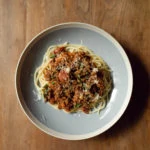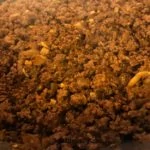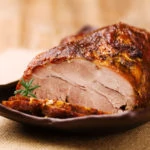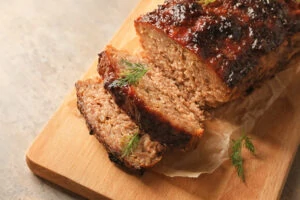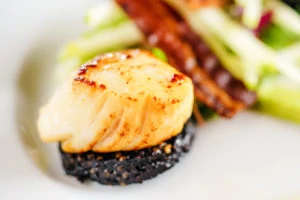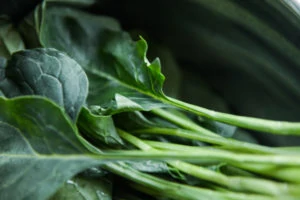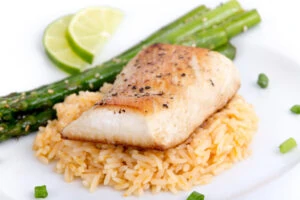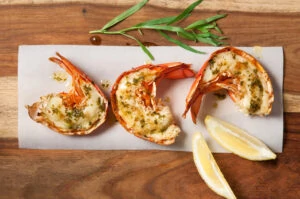Learning how to cook farro will help you enjoy more healthy whole grains without much effort. This nutty, savory, and versatile grain is an excellent alternative to rice and easier to make than you might think.
How do you cook farro? Rinse it, dry it, then place the farro in a pot with boiling water. Salt to taste then simmer it for 20-40 minutes, depending on the variety of farro you’re working with. After it’s cooked, drain it and fluff it up with a fork.
If you’re ready to up your grain game, then read on for how to cook perfect farro on the stovetop.
What is Farro?
Farro is a whole grain that comes from the Middle East but is now enjoyed around the world. It’s particularly popular in Italy, where dishes like creamy farrotto are frequent meals. Farro has a nutty flavor and a chewy, satisfying texture that doesn’t break down easily. For this reason, this hearty brown grain is wonderful in soups, under stir-fries or as a base for grain bowls.
Farro is sometimes confused with spelt, with is another nutty brown grain that looks similar. In fact, they’re two district grains. the best way to tell them apart is by looking closely: farro has slightly larger grains than spelt.

What type of farro should I cook?
If this is your first time cooking farro, you need to know there are three different types of farro. Each of the three farro varieties has a different cooking time and a slightly different flavor.
The three kinds of farro that you may find are whole farro, semi-pearled farro, and pearled farro.
- Whole farro: This is the full farro experience. Farro labeled whole farro has undergone almost no processing before it’s packaged up and sold on store shelves. This is a complete whole grain, which means both the outer husk and inner bran are fully intact. This type of farro has the strongest flavor and a firmer texture. It takes 40 minutes to cook on the stove.
- Semi-pearled farro: This is the middle-ground. In semi-pearled farro, the husk has been removed from the farro and the grain inside is polished. Polishing starts to break down the grain for faster cooking and a more mild flavor. It takes 30 minutes to cook.
- Pearled farro: This is farro with no grain and no bran. While it’s the least flavorful and toothsome, pearled farro cooks up in just 15 minutes. This is often the kind you’ll find on grocery store shelves, but be sure to read the label so you know how long to cook your farro for.
You can play along with all three options and see which one you like the most–but always remember the right cooking time!
Ingredients to Cook Farro
While there are dozens of ways to add flavor to farro, at it’s simplest, all you need to cook tender and nutty farro on the stove is:
- 1 cup of farro
- 2 cups of water
- Salt
Prepping Farro for Cooking
Step 1: Rinse the farro
Most grains, including rice, quinoa, and spelt, need to be rinsed before they are cooked. And farro does not get a pass! Place your farro in a fine-mesh strainer and rise it with running water until the water runs clear. This rinses off excess starch that builds up on the outside of the grains during packaging and processing. It also helps wash away any broken grains or other debris that can end up in grains.
Cooking farro
Step 1: Fill a pot with water and bring it to a boil
Fill a medium saucepan with 2 cups of water. While 2:1 is the precise ratio of water to farro for cooking, you can actually use much more water when cooking farro. Unlike rice and quinoa, which will easily overcook and become soggy and sticky if you use too much water, farro is hardy enough to stand up to excess water. This means that you can do away with the extra measuring cups and cook faro with more confidence. You’ll just need to drain the grains after they’re fully cooked.
Step 2: Add the farro and season it
Once the water is boiling, stir in the farro. When the farro is in the pot, salt it to taste. Half a teaspoon of salt per cup of farro will do the job just right.
Step 3: Bring to a simmer
Reduce the heat to medium-low, until you have a gentle simmer. Cover the pot and simmer for as long as your farro needs, depending on the variety you’re cooking. the farro for as long as its cooking type needs. Remember whole farro cooks in 40 minutes, semi-pearled needs 30 minutes, and pearled cooks in 20 minutes.
Step 4: Drain the cooked farro and fluff
After the right time has passed, check your farro for doneness. Scoop out a few grains and give them a sample. They should be tender, with some chew in the center. If your grains aren’t quite there yet, continue cooking them for a few more minutes, checking every minute or two to avoid overcooking.
When your farro is perfectly cooked, drain the grains into the sink using a fine-mesh strainer. Then return the farro to the saucepan and fluff it with a fork. To avoid sticky farro, you can drizzle in some olive oil or a tablespoon of butter. Enjoy!
Does farro need to be soaked before cooking?
Soaking farro is not necessary. However, in some cases, it can help. It depends on the type of farro you buy and how you like your farro. Soaking farro will speed up the cooking time. It can also yield a softer, more porridge-like texture. If that’s your goal, then soaking farro is a simple matter of covering it by several inches of water and leaving the grains to soften up for several hours. You can do this overnight if you’re planning ahead.
Note that soaking can diminish some of the nutty, earthy flavors of the grains. And pearled farro can break down in the water if left to soak for too long. Soaking is best left to whole farro for best results.
How do you know when farro is cooked?
You can’t tell whether farro is cooked or not by looking at it because it doesn’t expand as much during the cooking process. You have to taste farro to check whether it’s cooked or not. Cooked farro feels tender and slightly chewy.
What do you eat farro with?
There are a lot of things that go great with farro. And you don’t have to think too much about what to mix it with. Think as farro as an alternative to rice: mix it with salads, cheese, meat – anything that goes well with rice will go well with farro!
Given its Middle Eastern heritage, farro is especially popular with other flavors from that region. You can mix it with thick Greek yogurt and spicy harissa paste for a cooling, nutty and spicy grain bowl. Or serve it under a bed of grilled eggplant or roasted acorn squash for a healthy vegetarian dinner. You can even turn farro into an alternative to risotto by cooking it “risotto-style” with broth and finishing it with creamy, melted cheese.
Is Farro Gluten-Free?
Farro is actually a grain that contains gluten. Unlike rice and quinoa, farro is not gluten-free so those with celiac disease should not include this grain in their diet.
Can I Freeze Cooked Farro?
Yes, you can freeze cooked farro for a quick go-to grain. To do so, dump the cooked grains out on a baking sheet and spread them into a single layer. Place the baking sheet in the freezer for several hours, until the grains are fully frozen. Then place the frozen farro into zip-top airtight freezer bags and store for up to 3 months. You can defrost the grains in the microwave or in a saucepot on the stove.
How to Store Dried Farro
Dried farro has a long shelflife. To maximize freshness, store the grains in an airtight container in a dark, cool spot. A glass mason jar is a great place to keep it because you can always see exactly how much farro you have left. Once you open a bag of the grains, unless it has an airtight seal, it’s best to pour leftover uncooked farro into a new airtight container for storage.
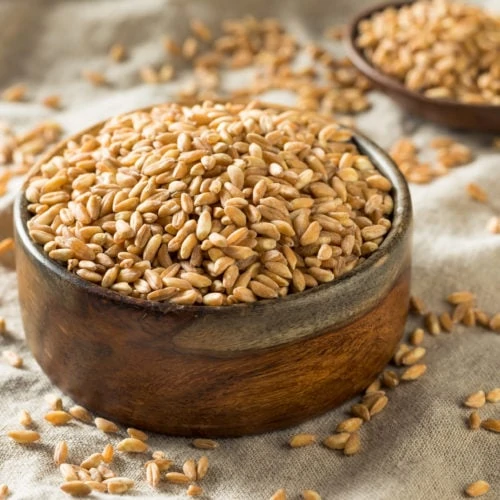
How to Cook Farro
Equipment
- Medium saucepan with a lid
- Fine-mesh strainer
- Wooden spoon
Ingredients
- 1 cup farro pearled, semi-pearled or whole
- 2 cups water
- salt to tate
Instructions
- Rinse the farro in a fine-mesh strainer under running water until the water runs clear.
- Bring the water to a boil in a medium saucepan.
- Add the farro and salt and bring to a gentle simmer. Cover and cook for 20 mintues for pearled farro, 30 minutes for semi-pearled and 40 mintues for whole farro. Check for donees and drain the farro.


